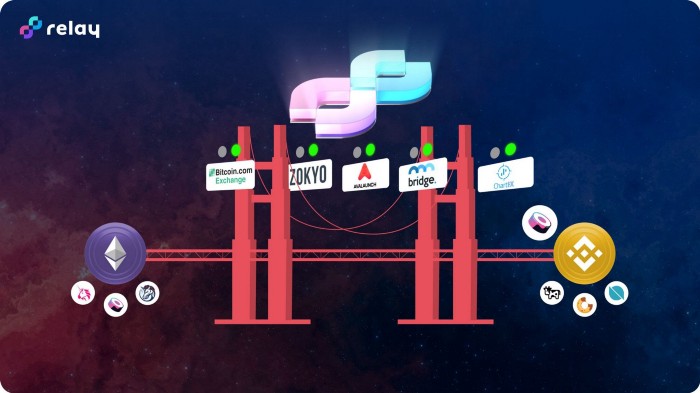The Relay Bridge, how does it work?


The RELAY bridge is based on the foundations set by the ChainSafe technology with the principles of lock/mint/burn/release and wrapped tokens mechanisms.
Security and safety are guaranteed by three approaches: Thorough smart contracts/code audits, continuous “white-hat” hacker surveillance, and decentralization of the relayers during a cross chain operation.
Bridging a token back and forth
To accomplish cross-chain transfers, a user wallet sends tokens to the Relay bridge contract and receives them back on the destination chain in the same wallet address.


Wrapped tokens vs fungibility
One drawback of wrapped tokens is the non fungibility issue: Two bridges from two different projects end up with a different (and non compatible) wrapped token of the same token bridged from its native chain. So it means liquidity is fragmented as well on the destination chain, like the need to have 2 liquidity pools for each of the wrapped tokens on the destination chain for the same token transferred from its origin chain.
Some projects are attempting to solve the fungibility issues, but they have/had been experimental and/or careless with audits, disregarding the security of their users’ funds, and being subjected to major and public known and repeated hacks (like Thorchain, ChainSwap, Poly Network, AnySwap). For the time being, these more exotic cross-chain designs using liquidity bridging, mapping tokens, etc. have proven to be most vulnerable to attack vectors from malicious actors. Users of these bridges have lost funds, sometimes hundreds of millions per incident. For the Relay team, security and safety is paramount. For now, using wrapped tokens has proven to be the most bullet proof method.
Security with audits
Security of the smart contracts and bridge code:
- Chainsafe has been audited by Consensys Diligence
- Zokyo audited the original smart contracts when the project was formerly known as the Zero Exchange (the initial launch of the bridge, which morphed into Relay)
- The Relay bridge has been fully audited by Halborn (+ subscribed to their continuous audit monitoring service)


Ease of integration of new chains — EVM compatibility
When a new chain is EVM compatible, it’s technically easier to add it to the bridge portfolio than one which is not. Although the team’s objective is to also support non EVM compatible chains, like Solana and to consider other similar opportunities.
Gas tokens faucet
When a wallet transfers tokens to a chain for the 1st time, a drip of gas token (like AVAX, HT, BNB, etc, except ETH) is automatically airdropped on the destination chain to allow for a few trades on the chain. It avoids being stuck with tokens and unable to trade without first going to a CEX for example, buying some gas tokens and send it to the wallet.
About RelayChain
The race to bridge DeFi is over with RelayChain. Almost instantly add cross-chain swaps to any DEX or dApp. Earn bridge fees in ETH, MATIC, DOT, BSC, AVAX, HECO and more.
SOURCE
https://medium.com/@Relay_Chain/the-relay-bridge-how-does-it-works-d46ee1c795b3




